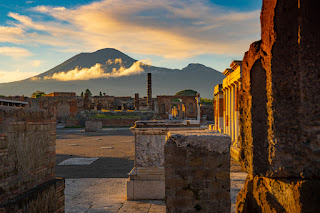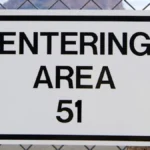
PRASIT CHANSAREEKORN
Pompeii was an ancient Roman city in Italy near present-day Naples. The Oscans settled in Pompeii in the 7th century BC, and the Romans took over in the 4th century BC. Pompeii was a popular vacation destination for the Romans, and many had summer homes there. Pompeii had an amphitheater that could seat 20,000 people, and the wealthy residents even had running water in their homes. A massive earthquake in 62AD severely damaged the city’s buildings, prompting them to begin rebuilding. Mount Vesuvius erupted on August 24, 79AD, 17 years after the earthquake. It is estimated that around 16,000 people were killed. Pompeii was buried 20 feet under ash.
Interesting facts about Pompeii:
The word Pompeii derives from the Greek mythology word pumpe. This term was used to describe the parade held in celebration of Hercules’ victory over the giants.
Because of previous volcanic eruptions, Pompeii had rich soil, which provided prime farmland for growing olive trees and grapes.
Pompeii was famous during its time for a fish sauce called Garum, which was produced there.
There had been earthquakes to warn of Mount Vesuvius erupting, but Roman science was unaware of the link between volcanoes and earthquakes.
Mount Vesuvius hadn’t erupted in 1,800 years, and the Romans were unaware it was a volcano.
The Pompeii Amphitheater dates from 80BC and is the world’s oldest known stone building.
Pliny the Younger described the destruction of Pompeii in a letter in which he also mentioned the death of his uncle Pliny the Elder.
Mount Vesuvius erupted just one day after the Romans celebrated the religious festival honoring Vulcan, the Roman God of Fire.
The walled city of Pompeii covers 150 acres and is the world’s largest archaeological and excavation site.
It is estimated that the Mount Vesuvius eruption released 100,000 times the energy of the atomic bomb that was dropped on Hiroshima.
The initial blast of the volcano’s eruption is thought to have killed more than 13% of Pompeii’s population.
Many artifacts were saved by the ash that fell on Pompeii. These artifacts have been used to learn more about Pompeii’s people and their way of life.
Pompeii was discovered in 1738 while workers were constructing King of Naples Charles of Bourbon’s palace and came across its buried remains in the ash.
Many people died on the spot when the ash fell on Pompeii. Their bodies disintegrated over time, leaving perfect holes in their shape. Archaeologists filled many of these holes with plaster, allowing them to make casts of Pompeii’s residents, revealing the position they were in when they died.
Every year, over 2.6 million people visit the ruins of Pompeii.
In 1997, UNESCO designated Pompeii as a World Heritage Site.
In 1971, Pink Floyd recorded a live concert at Pompeii’s Amphitheater.
Pompeii has served as the setting and backdrop for numerous TV shows and films.









